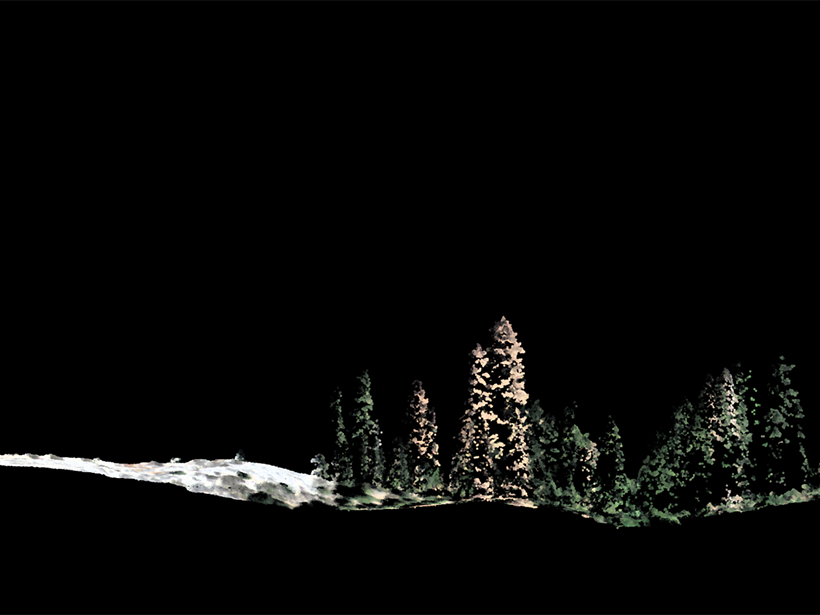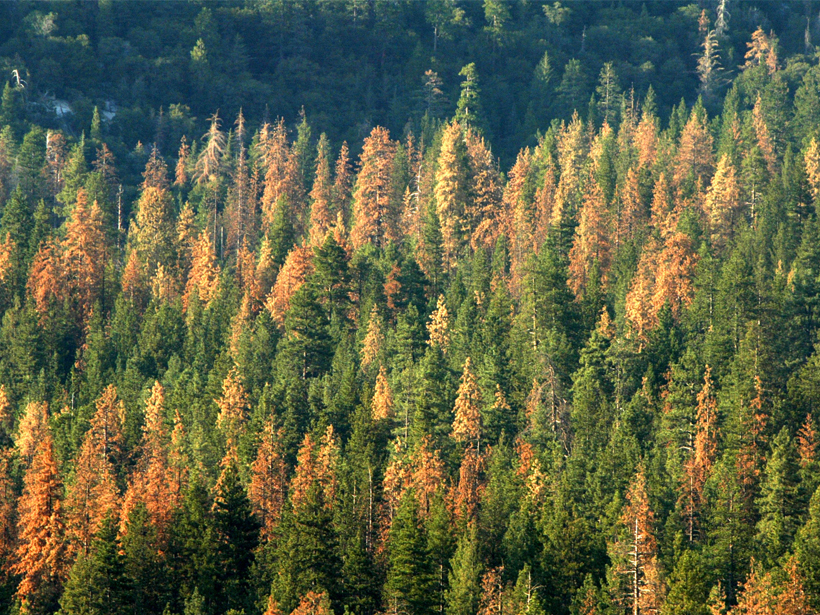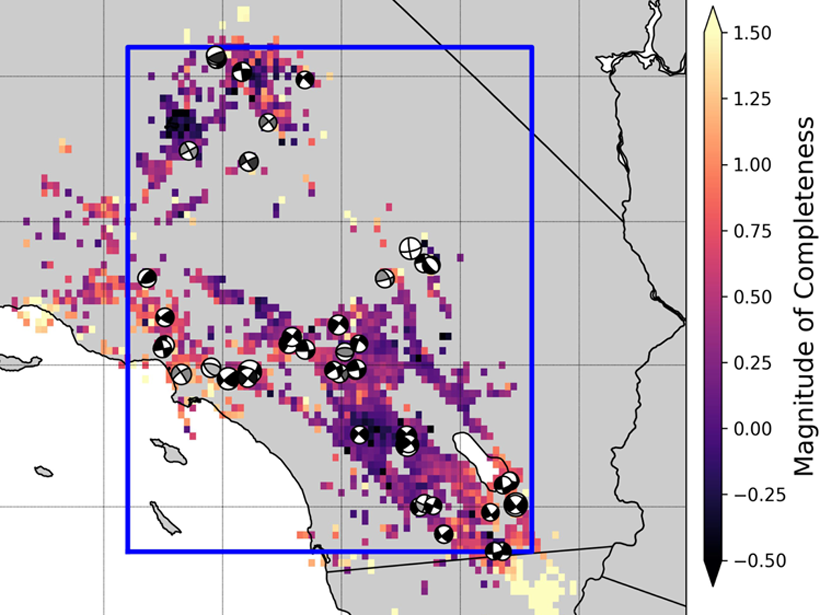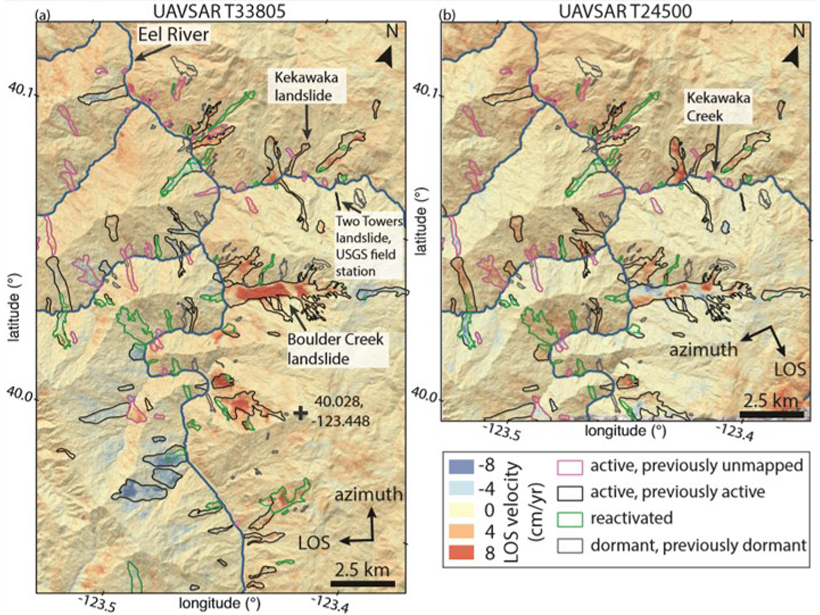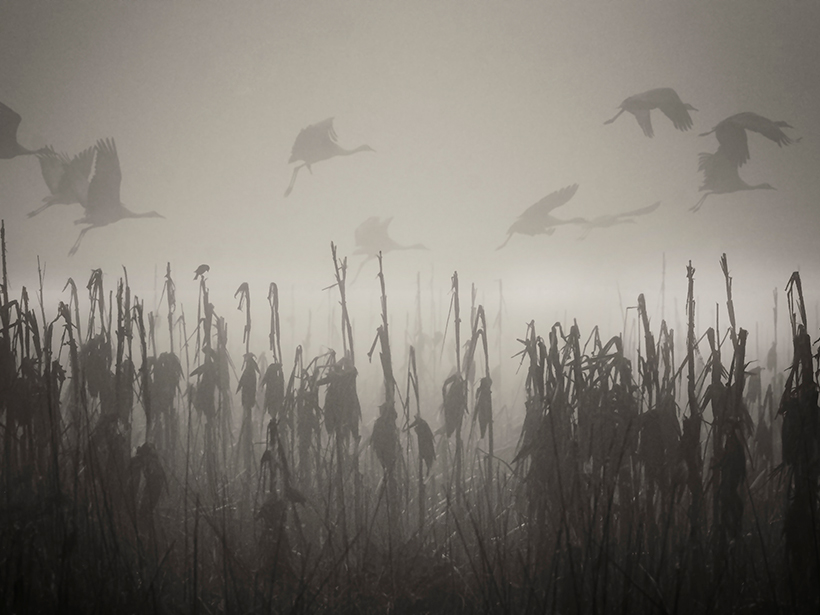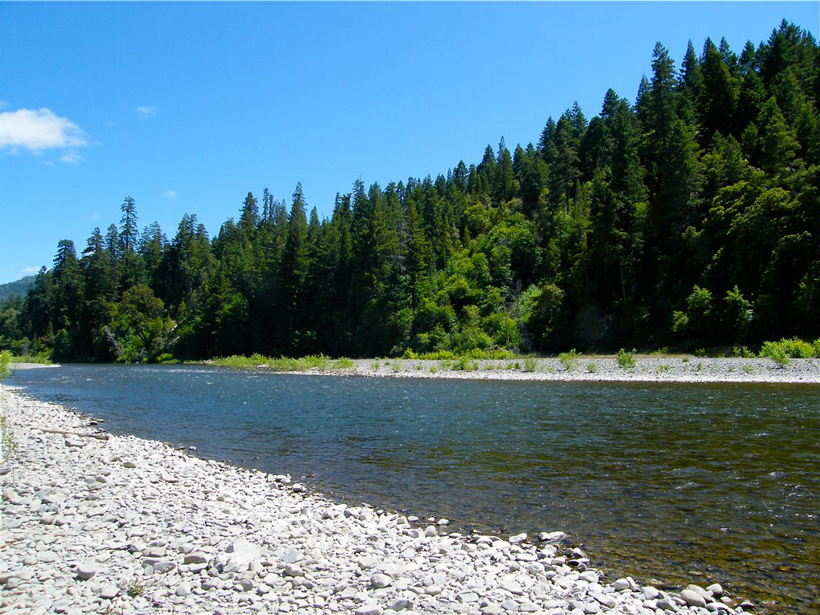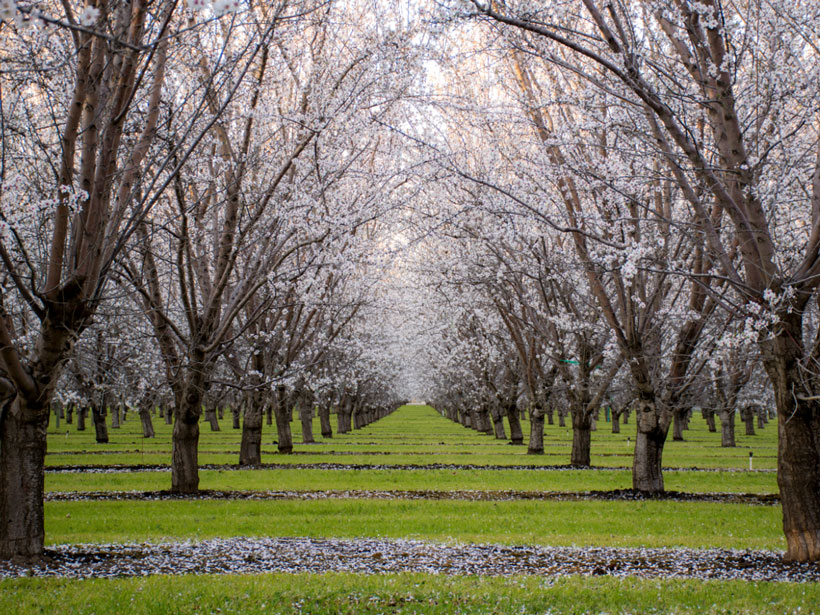New research tracking 1.8 million trees found that tall trees died at more than twice the rate of smaller ones toward the end of extreme and persistent drought.
California
Exposing Los Angeles’s Shaky Geologic Underbelly
Current calculations might underestimate the susceptibility of Los Angeles to earthquake shaking, so researchers and volunteers are deploying seismic networks near the city to remedy a data shortage.
Foretelling Forest Death from Above
A satellite-based early-warning signal may spot the start of a forest’s decline and give forest managers more time to save its life.
Golden State Blazes Contributed to Atmospheric Carbon Dioxide
A new case study investigates causes and effects of California’s 2017 wildfire season.
Most Southern California Mainshocks Follow Foreshocks
New research using a highly complete earthquake catalog shows that 72% of M4+ mainshocks are preceded by foreshocks, implying that foreshock activity is much more prevalent than previously thought.
Landslide Activity Ramps Up With Extreme Rainfall
An increase in activity of hundreds of slow-moving landslides during extreme wet conditions in California provides insights into the landscape response to ongoing climate change.
Fading Air Pollution Reduces Fog in Central Valley
The tule fog in California’s Central Valley is notorious for causing delays and accidents throughout the region; however, a decrease in air pollutants is reducing the fog’s frequency.
Paleomagnetism Indicators May Be Flawed
A new study finds that magnetism in volcanic ash tuff forms through varied processes, calling into question previously reliable signatures used to study variations in Earth’s magnetic field.
Answer to California Landscape Riddle Lies Underground
Scientists link vegetation mosaics in California to patterns of weathered bedrock.
California Heat Waves Triggered by Pacific Thunderstorms
New link may offer 5-week lead time on predicting extreme heat in California’s fruit belt.

